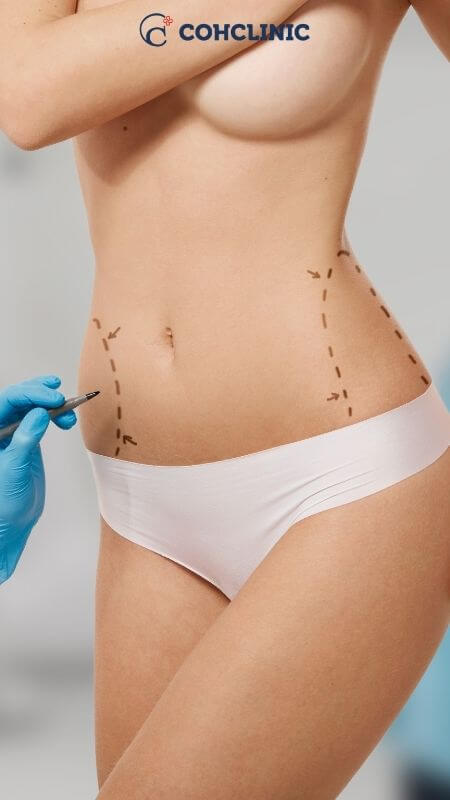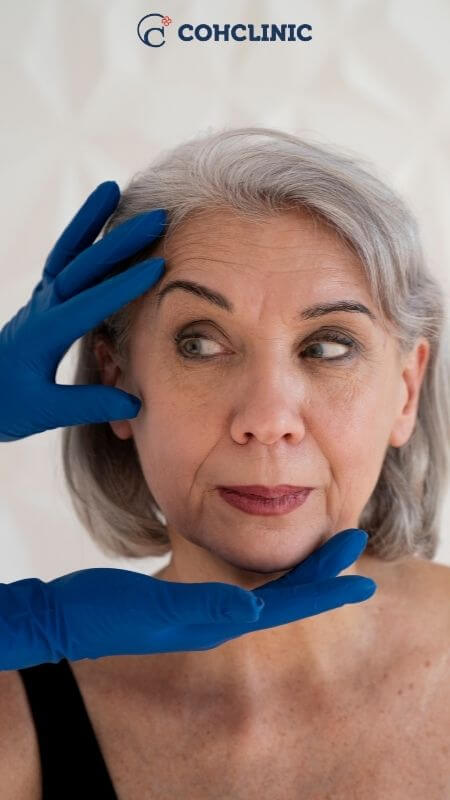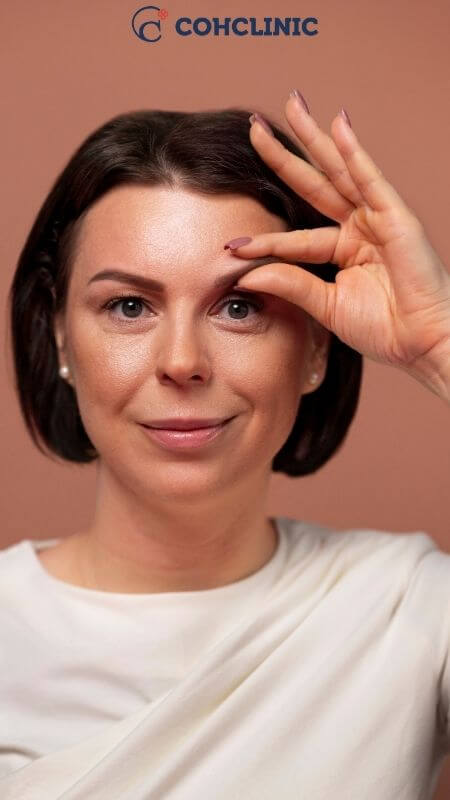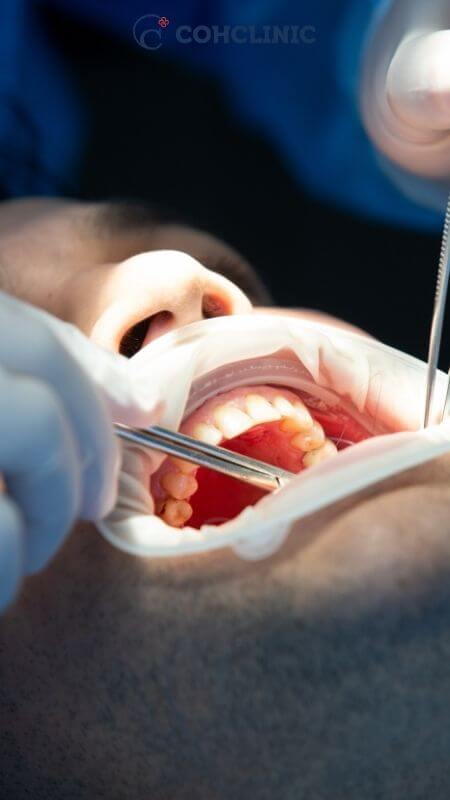Are you struggling with the emotional and physical challenges of gynecomastia, a condition that leads to the enlargement of male breast tissue? If so, you’re not alone. Although it affects men of all ages, it can negatively affect a person’s self-esteem. While there are non-surgical approaches and lifestyle changes that may help, many individuals find themselves contemplating the question: Is gynecomastia surgery worth it?
In this blog post, we will delve into the subject and explore the pros and cons of gynecomastia surgery, helping you make an informed decision. We understand that every individual’s experience with gynecomastia is unique, and that’s why we aim to provide you with valuable insights that can guide you toward finding the best solution for your specific needs.
What is Gynecomastia?
At any age, guys might acquire enlarged breast tissue due to the condition known as gynecomastia. It results from a hormonal imbalance, especially from either a rise in estrogen or a reduction in testosterone. Certain drugs, underlying medical disorders, or lifestyle choices such as drug or alcohol usage can contribute to the development of gynecomastia. It is not a severe medical illness, but it can nonetheless lead to lower self-esteem. Medication, surgery, and observation are available as treatments.
Who is a Good Candidate for Gynecomastia Surgery?
To establish whether gynecomastia surgery is appropriate for your body goals, your surgeon will do a complete evaluation. Male breast reductions are often a good option for the majority of healthy, ideal-weight men who want to shape their chests. Patients should hold off on treatment until they are at least 20 years old so that any gynecomastia brought on by puberty can cure spontaneously when hormones naturally stabilize.
Pros and Cons of Gynecomastia Surgery

The Advantages of Gynecomastia
The surgery is the most effective treatment for a better-shaped and toned chest with a more attractive cosmetic appearance. Gynecomastia treatment can also assist to alleviate pain or discomfort caused by the disorder, resulting in an improvement in quality of life.
The Disadvantages of Gynecomastia
Reactions to tape, suture materials, and glues; topical preparations or injectable medications; anesthetic hazards; bleeding or blood clots; are a few uncommon but important surgical issues.
Surgery requires cuts and stitches. Breast asymmetry or variations in the breast’s form and contour are occasionally possible. There may be a need for revision surgery in this situation.
Post-operative complications include persistent discomfort, infection, and perhaps poor wound healing. Remember that surgery might result in obvious scarring and long-lasting pigment changes, as with any procedure. Some people may also have temporary or permanent alterations to their breast or nipple sensitivity.
Gynecomastia vs. Pseudogynecomastia
The basic difference between gynecomastia and Pseudogynecomastia is the reason for chest growth. The real breast tissue grows with gynecomastia. Pseudogynecomastia is characterized by breast enlargement caused by an excess of fat tissue accumulation.
The surgeon differentiates between the two problems by using his fingers to feel the nipple and areola region. Gynecomastia occurs when a hard mass of tissue under the areola feels distinct from the fatty tissue around it. Pseudogynecomastia occurs when there is no bulk behind the nipple or when the breast feels uniform.
The treatment options for both differ based on their underlying causes. Pseudogynecomastia, which is primarily caused by excess fat accumulation, can be effectively addressed through lifestyle changes such as dietary modifications and exercise to reduce overall body fat. On the other hand, true gynecomastia, which involves the growth of glandular tissue, often requires surgical interventions for effective treatment. Consequently, Pseudogynecomastia is generally easier to treat compared to true gynecomastia.
Gynecomastia vs. Fat
Gynecomastia, a condition characterized by the growth of breast gland tissue in males, is caused by a hormonal imbalance. It can affect one or both breasts, regardless of body weight, and is often resistant to exercise or weight loss efforts. Gynecomastia treatments target the underlying issue, such as hormone imbalances, drug side effects, or underlying medical issues. To treat the more severe symptoms and remove the extra glandular tissue, it could be essential to think about surgical intervention.
Chest fat, also known as Pseudogynecomastia, occurs when excess adipose tissue accumulates in the chest region. This condition is commonly associated with being overweight or obese, and the fat deposition extends beyond the chest area to other parts of the body. Unlike gynecomastia, chest fat can be effectively brought under control and reduced through a combination of a balanced, healthy diet and regular exercise. By maintaining proper nutrition and engaging in consistent physical activity, it is possible to decrease fat stores specifically in the chest area.
Is it good to have gynecomastia?
It’s important to note that gynecomastia is a medical condition, and whether or not it is “worth it” to seek treatment for it depends on the individual’s personal circumstances. In some cases, it may cause emotional distress and affect self-esteem, which can hurt the quality of life. Treatment options for this procedure include medication, surgery, or observation, and the choice of treatment will depend on the severity of the condition and the individual’s personal preferences.
It’s also essential to consider the potential risks and benefits of each treatment option. For example, surgery may be more effective at reducing breast size, but it also carries risks such as infection and scarring. Although medication is less invasive, it may take longer to notice improvements and may not be successful in all cases of gynecomastia. In conclusion, individuals should seek the advice of a healthcare professional before deciding to have gynecomastia treatment. Personal preferences and medical history will be taken into account during the consultation.
Schedule a Consultation with COH Clinic Today
Ready to take control of your gynecomastia journey? We’re here to assist you. Connect with us today to discuss your concerns and receive personalized guidance. Our team of experts will evaluate your unique situation, address any doubts, and provide you with the information you need to make an empowered choice. Contact us at +90 (536) 934 6524 to regain your self-confidence and have a more masculine physique. Your satisfaction and well-being matter to us.
Frequently Asked Questions
Is gyno surgery risky?
Is gyno surgery risky?
Common side effects include asymmetry, bruising, bleeding, fluid collections, uneven contours, nipple skin loss, apparent scars, numbness, and inverted nipples.
Can gyno grow back after surgery?
Can gyno grow back after surgery?
Male breast tissue excision by gynecomastia surgery is thought to be permanent. Therefore, any surgically excised breast tissue won't regenerate.
What is the success rate of gynecomastia surgery?
What is the success rate of gynecomastia surgery?
Gynecomastia surgery has a greater than 90% success rate, and most men are happy with the results. Gynecomastia, nevertheless, might occasionally come back for unknown hereditary reasons.
Will gyno get worse with age?
Will gyno get worse with age?
The development of breasts throughout puberty may go away on their own during adolescence, but if gynecomastia persists after the age of 17, surgery is necessary. Waiting over the age of 18 is not advantageous, and for the majority of men, untreated gynecomastia will only worsen with time.
Do nipples shrink after gyno surgery?
Do nipples shrink after gyno surgery?
A spontaneous condition of complete areola shrinking occurs after surgery. Ten to fifty percent of the initial diameter of the areola will be lost.
Is gyno surgery painful?
Is gyno surgery painful?
Most patients have mild to moderate discomfort at the incision sites and chest area 12 to 24 hours following surgery. Most people mention their pain as light and bearable, and the majority of it can be managed with the painkillers that have been given.
Can you build muscle after gynecomastia surgery?
Can you build muscle after gynecomastia surgery?
The majority of patients may start adding strength training back into their routine six weeks following gynecomastia surgery. Lightweights should be used, and this should be done gently.
Do you lose muscle after gynecomastia surgery?
Do you lose muscle after gynecomastia surgery?
After gynecomastia surgery, you shouldn't experience any changes in strength. The whole procedure is carried out above the pectoralis major muscle; there is no division or cutting of the muscle involved.
How long does gynecomastia surgery take to heal?
How long does gynecomastia surgery take to heal?
Initial male breast reduction recuperation takes, on average, 1-2 weeks. Patients should take it easy during this period and refrain from engaging in intense activities to promote recovery and prevent problems.
How long after gynecomastia surgery can I go back to work?
How long after gynecomastia surgery can I go back to work?
Following gynecomastia surgery, you may often return to sedentary occupations in 3 days. It might take one to two weeks to return to the physical jobs. Patients who have physically demanding occupations sometimes change their employment during the first week or hire assistance to help them return to the workplace sooner.
Does gyno surgery leave scars?
Does gyno surgery leave scars?
All scars from gynecomastia surgery are permanent, even though some may be hidden by the breasts' natural shapes.
Will my chest still be fat after gynecomastia surgery?
Will my chest still be fat after gynecomastia surgery?
Gynecomastia can permanently eliminate man boobs, but it can't stop fat from building up around the chest and other regions. You should be warned that if you gain weight in the future, the area of your chest where gynecomastia formerly afflicted you may begin to accumulate fat.
What does gynecomastia surgery do?
What does gynecomastia surgery do?
By eliminating extra fat, glandular tissue, and skin from the male breasts, gynecomastia surgery improves the male chest contour.
What are the benefits after gynecomastia surgery?
What are the benefits after gynecomastia surgery?
The extra breast tissue is removed during surgery to treat gynecomastia, giving the patient's body a more toned, athletic, and masculine appearance. Wearing more form-fitting apparel and having a more masculine-looking chest might make you feel more at ease in social circumstances.
Does gynecomastia surgery increase testosterone?
Does gynecomastia surgery increase testosterone?
A gynecomastia surgery does not affect your testosterone or estrogen levels. Breast tissue is affected by hormones, although it does not release hormones.







